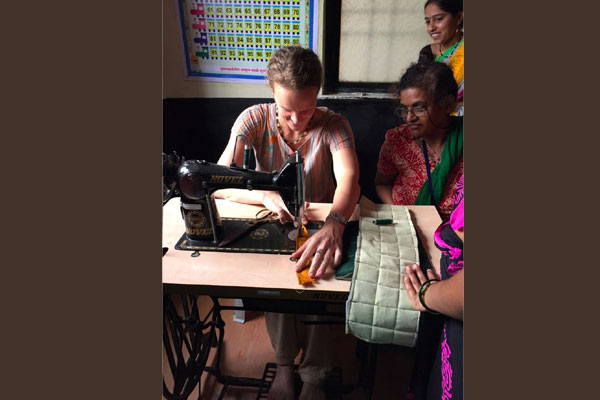
For many educators, community colleges are a key part of the education system of a 21st century economy. In India, however, they remain a small part of the higher education landscape.
Community colleges typically offer two-year professional degree programmes that are more practical and less theoretical or academic than three- or four-year bachelor programmes. Indian advocates of two-year colleges say they have been inspired by the big role such institutions play in the United States, where they enrol nearly 38 percent of all undergraduate students.
These advocates believe the two-year model could do much to support the Indian government’s flagship Skill India programme.
“There is a huge gap between the demands by industry and entry-level candidates with the required skills,” says Rahul Choudaha, who holds a doctorate in higher education from the University of Denver and is now the chief executive officer of DrEducation, LLC, a New Jersey-based global higher education research and consulting firm.
Not only are two-year colleges needed to meet the growing demands of the economy, but they are also a crucial instrument for social mobility, according to Xavier Alphonse, founder director of the Indian Center for Research and Development of Community Education (ICRDCE) in Chennai. The organization established and oversees more than 230 community colleges in at least 17 states in India.
In an essay, Alphonse wrote community colleges “empower the disadvantaged by helping them develop skills that will lead to gainful employment.” He goes on to say two-year colleges can “make a qualitative difference in the lives of the urban, rural and tribal poor, and women.”
Like other Indian advocates of two-year colleges, Alphonse says he has been inspired by the significant role of community colleges in the United States.
The U.S. model
Ajay Mohan Goel, former executive vice-president of the Bengaluru-based Wadhwani Foundation, was one of the leading architects of a 2012 project of the Indian Ministry of Human Resource Development to develop community colleges inside three-year bachelor colleges. “Our original vision,” says Goel, “was that 5,000 three-year colleges would establish community colleges within themselves; a further 1,000 would transform themselves into a [full-time] community college.”
Goel also led a trip of senior Indian officials to the United States to learn more about the community college system. “We studied the American model intensively,” he says, adding what they saw “is extremely relevant” to India’s education needs. Today, Goel is the co-founder and principal consultant at the Uttar Pradesh-based Skills Management Group, which provides consultancy services on skilling and entrepreneurship.
Indeed, community colleges play a big role in the American higher education system. There are nearly 1,300 of these colleges in the United States, with more than seven million students enrolled in degree programmes. Less than 40 percent study full-time, while the rest are working adults who take classes in the evenings and on weekends. The average age of community college students is 28. The average cost of attending a four-year college in the United States is $25,409 (approximately Rs. 16,36,000) per year, almost half the average annual household earning of Americans; though the best schools can cost more than double that amount. Community colleges, on the other hand, cost much less and are generally open to everyone who has graduated high school.
Benefits of community colleges
These colleges serve two purposes: preparing graduates for a job, and enabling access to a bachelor’s degree programme by allowing students to transfer credits earned to a four-year college. In the United States, “there is a very smooth transition” from two-year to four-year colleges, says Choudaha, something that is very rare in India. Forty-six percent of the students who graduate from a four-year college in the US were enrolled at a two-year college at some point in the previous 10 years, according to a 2015 report of the Virginia-based National Student Clearinghouse Research Center.
In India, the government is focusing on using short-term technical training programs to meet the country’s skill needs. “I’m not arguing against them,” says Jillian Gross, a Fulbright-Nehru scholar and doctoral student at the University of Michigan, who recently conducted a study on the expansion of the community college model in India. But, she adds, while technical training teaches students how to meet a specific job requirement, two-year colleges provide a broader education to help students throughout their careers.
That education includes soft skills like communication, teamwork and critical thinking, says Gross. When they are of sufficient quality, community colleges enable “individual transformation” and “the possibility of upward mobility.”
Photo : Jillian Gross, Fulbright-Nehru scholar, in Pune.
Support Our Journalism
We cannot do without you.. your contribution supports unbiased journalism
IBNS is not driven by any ism- not wokeism, not racism, not skewed secularism, not hyper right-wing or left liberal ideals, nor by any hardline religious beliefs or hyper nationalism. We want to serve you good old objective news, as they are. We do not judge or preach. We let people decide for themselves. We only try to present factual and well-sourced news.







